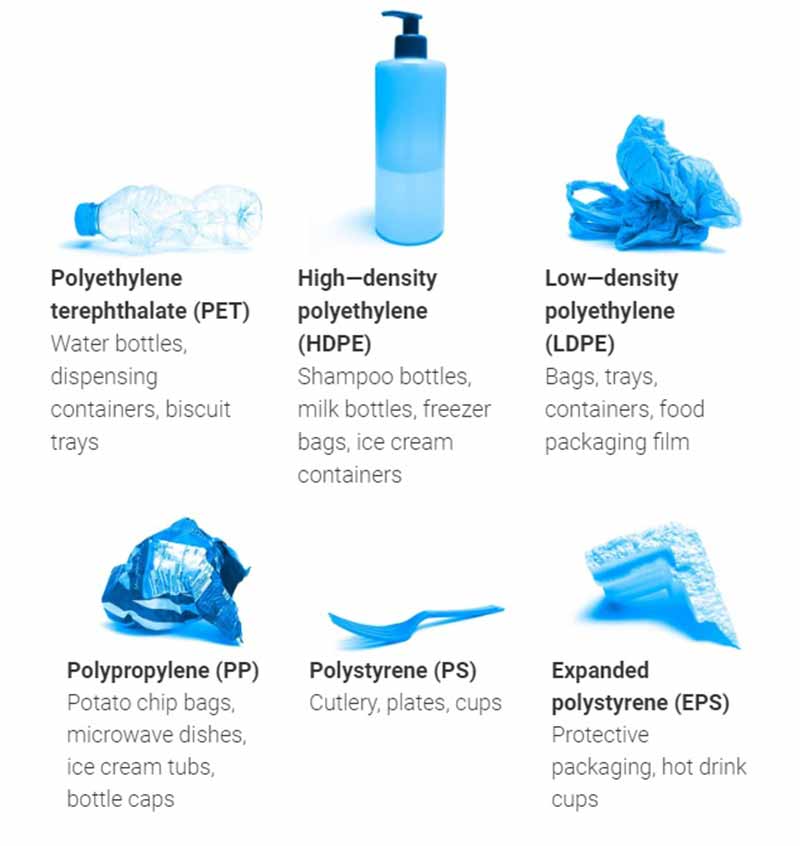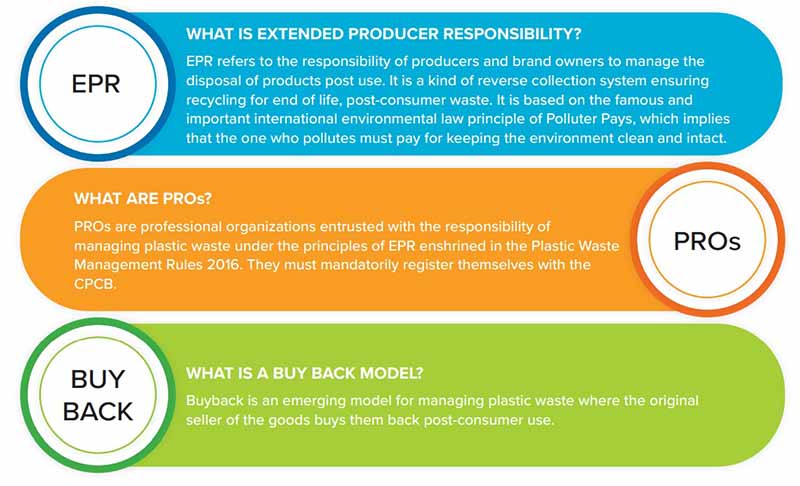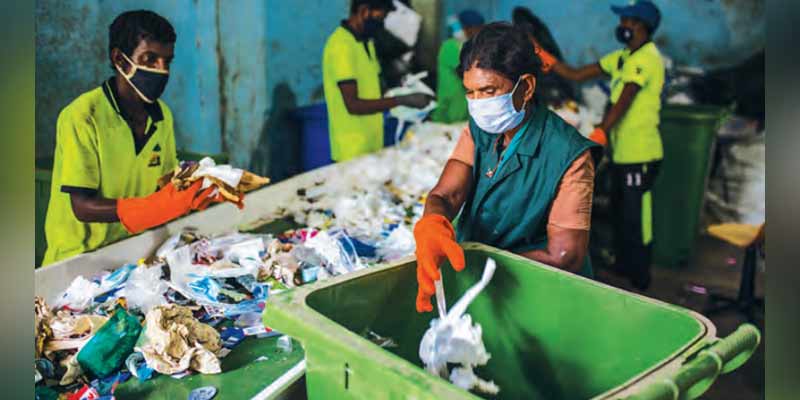- India
- Oct 19
Plastic waste management in India
Only about 9 per cent of the total plastic produced globally gets recycled, about 12 per cent is incinerated and energy is recovered, and the rest — about 79 per cent — gets into land, water, and ocean and pollutes the environment.
Last week, NITI Aayog and United Nations Development Programme (UNDP) India launched a handbook to promote sustainable management of plastic waste in the country.
The handbook will play a major role in fulfilling the goal of reducing the use of plastic and increasing plastic waste recycling, and also ensuring that plastic waste is brought to a minimum.
The report has been developed in consultation with eminent experts and leading organisations in the domain of plastic waste. The discussion was initiated in February 2021. This was followed by over 20 virtual stakeholder consultations, including Urban Local Bodies, recyclers, corporates, civil society organisations, academia, managed by UNDP.
The need for plastic waste management
• Plastic was first invented in 1907, and given that it was cheaper and more convenient than other materials, it soon found use in varied ways in our daily lives.
• Today, plastic is present in almost everything, from our money to electronic appliances, and it is used across multiple sectors, including packaging, building, construction, transportation, industrial machinery and health among others.
• However, the lack of sustainable plastic waste management (PWM) poses a serious threat to our environment and natural ecosystem globally.
• Data indicates that while a large quantum of plastic waste is generated, low levels of it are sustainably managed and discarded worldwide.
• From 1950 to 2015, around 8.3 billion metric tonnes (BMTs) of plastic had been produced globally, and of this, 80 per cent – 6.3 BMTs – was accounted as plastic waste.
• Of these 6.3 BMTs of waste, only 9 per cent was recycled, 12 per cent incinerated and 79 per cent dumped into landfills, oceans or waterbodies.
• Various manufacturing industries across the globe produce 400 million tonnes of plastic waste per year, with the packaging industry being the largest contributor. According to a report by FICCI, 40 per cent of the packaging needs in India are fulfilled using plastic.
• Globally, plastic pollution has emerged as a serious menace in the absence of streamlined PWM focusing on reuse, reduction, and recycling of plastic waste.
• All developed and developing countries are individually taking actions to manage plastic waste, but the onus is mainly on developing countries.
• The CPCB Report (2019-20) states that 3.4 million metric tonnes of plastic waste are generated in India annually.
There are two primary ways to manage plastic waste.
• The first is recycling or re-processing different categories of plastic waste into secondary material. The second is the incineration of plastic waste. However, incineration is expensive and causes pollution if not done using the right equipment.
Single-use plastic
The Plastic Waste Management Rules, amended in 2021, define single-use plastic as a plastic item intended to be used once for the same purpose before being disposed of or recycled. The United Nations defines single-use plastics, often referred to as disposable plastics, as being commonly used for plastic packaging, including items intended to be used only once before being thrown away or recycled.
These include grocery bags, food packaging, bottles, straws, containers, cups and cutlery.
Single-use plastic is the most popular kind of plastic due to its easy access and high use. While it is cheap, strong and hygienic for transporting goods, it is the most difficult to recycle.
Plastic carry bags are produced using less energy and water and generate less solid waste than paper bags as they take up less space in landfills. These salient features of single-use plastics make it a preferred material in commercial use.
The adverse impacts of single-use plastic have created an alarming situation across the globe with a call for countries to make commitments against plastic.
Rules and guidelines for plastic waste management
To address the challenge of the mounting waste crisis in the country, India started setting up its regulatory framework on waste management almost two decades ago. In 2000, the ministry of environment, forest and climate change notified the first-ever law on waste management in the form of the Municipal Solid Wastes (Management and Handling) Rules. Since then, the country’s waste management regulations have developed in several aspects and undergone a massive transformation.
In India, the Plastic Waste Management Rules of 2016 and 2018 and the recently announced amendment of 2021 focus on single-use plastics. The rules detail various categories of plastics and recommend recycling methods based on the type of plastic polymer used.
Plastic Waste Management Rules, 2016
• Plastic Waste Management Rules, 2016 have been notified on March 18, 2016. These rules apply to the manufacture, import stocking, distribution, sale and use of carry bags, plastic sheets or multilayered packaging, etc.
• For the first time, responsibility of waste generators has been prescribed. Individual and bulk generators like offices, commercial establishments, industries are to segregate the plastic waste at source, handover segregated waste, pay user fee as per bye-laws of the local bodies.
• Extended Producers Responsibility (Under Plastic Waste Management Rules 2016) puts the onus on the manufacturers for the treatment, recycling, reuse or disposal of products after a consumer has used and disposed them.
Four major components of plastic waste management
Component 1: Technical model for plastic waste recycling and management
This component based on an integrated and inclusive approach by involving different stakeholders and their social benefits, covers:
a) Development of a baseline system of plastic waste management at the city level.
b) Systematic approach for promoting recycling of plastic waste at the city level.
c) Stakeholder identification and partnerships.
d) Development of regulatory need-gap analysis and proposals for the holistic management of plastic waste.
Component 2: Material Recovery Facility (MRF) for improved plastic waste management implementation
For an MRF to be economically sustainable, it needs to be equipped with processes and protocols which not only address dry waste management but also create a sustainable ecosystem for resource efficiency, environment compliances, basic amenities, health and safety and a socio-economic support system for key players such as waste pickers and recyclers.
Component 3: Institutionalisation of MRFs in governance bodies
The mainstreaming of waste pickers in the plastic waste management system would result in improved socio-economic conditions for waste pickers and increased recognition in society. This requires the institutionalisation of various recommended models and waste pickers by ULBs for long-term sustainability.
As per the Solid Waste Management Rules, 2016, waste pickers are defined as persons or groups of persons informally/formally engaged in the “collection of reusable and recyclable solid waste” for sale to recyclers directly or through intermediaries to earn their livelihood. The waste pickers in an informal set-up face various challenges which can be resolved through their institutionalization.
Some of the major activities are linking services of the waste pickers with MRFs, capacity building, making them financially literate and opening bank accounts for them, linking them to various social protection schemes, providing occupational ID cards, health benefits and personal protective equipment while working, providing facilities like creches or play areas and other basic child education facilities, and creating self-help groups.
Component 4: Information, education & communication (IEC) and Digitalisation
For effective PWM, technology is an important cornerstone that covers traceability, accountability and digital governance. Mobile phone apps can be developed for this purpose and can be used by various stakeholders such as waste pickers, recyclers, ULBs and citizens in order to integrate everyone into one digital cloud. This would enable access of real-time data from the field to track the integrated plastic waste supply chain right from point of collection to the end recycler.
Manorama Yearbook app is now available on Google Play Store and iOS App Store




